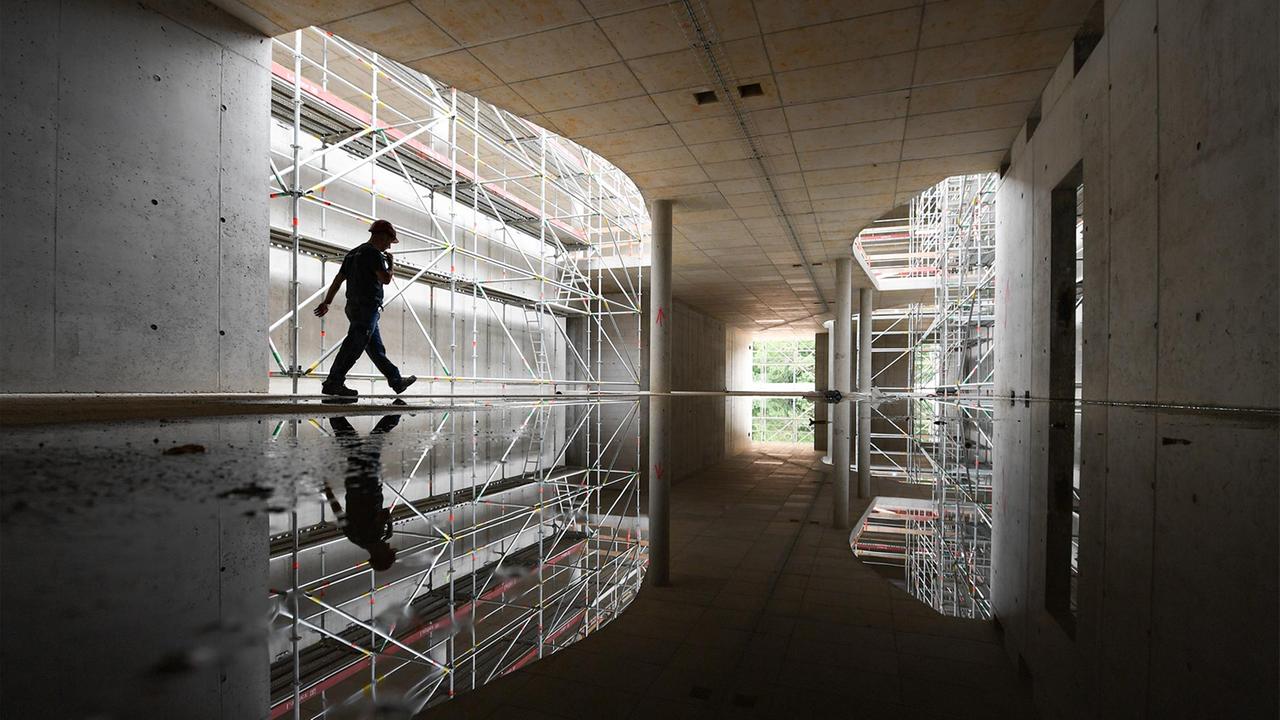analysis
Römertopf, Arko or Hussel – many well-known companies have recently slipped into bankruptcy. Are these just isolated cases or are they an example of a big wave?
The insolvency of one company as an opportunity for another – insolvency auctioneer Fabian Altrichter has turned this into a business model: “We support the insolvency administrators as service providers. This means that at the beginning we do valuation reports for machines, for inventory, for operating and business equipment and then we also help during processing.”
Green plants go under the hammer
That means: Fabian Altrichter and his team from Restlos are selling everything that once belonged to a company that is now insolvent. The entire office furnishings often go under the hammer – i.e. the plates, cups and cutlery from the office kitchen, wall pictures and monitors, desk chairs and tables, as well as green plants.
If you consider the many headlines that are currently reporting on the big wave of bankruptcies sweeping through Germany, Fabian Altrichter probably won't be able to get out of work at all. Well-known companies have been affected, such as the traditional manufacturer Römertopf, numerous fashion brands and most recently Arko and the confectionery company Hussel. But Altrichter's observation is different: “The insolvencies are currently still relatively low, we are not noticing a major increase.”
“Perceived wave of insolvencies”
So isn't it the big wave of bankruptcies after all? Experts like Reint Gropp, head of the Leibniz Institute for Economic Research Halle (IWH), are cautious about the term wave of insolvencies – despite the currently high number of company insolvencies: “We don't expect the number of insolvencies to fall again. But whether they will now I can't say it's a wave.”
The Association of Insolvency Administrators (VID) is clearer: “We are at best seeing a perceived wave of insolvencies. Despite the current increase, the number of company insolvencies is only at pre-Corona levels and far away from the peak values of the financial crisis,” says Christoph Niering, insolvency administrator and VID Chairman.
Although there are currently significantly more bankruptcies, the numbers are currently no higher than before the pandemic. In March 2016, 1,099 companies filed for bankruptcy in this country; in January of this year, the number of bankruptcies was 1,077 – around the same level as in spring 2016.
Government aid kept companies afloat
The fact that it currently feels as if there is a wave of bankruptcies in Germany is mainly due to the low number of bankruptcies during the pandemic. According to the IWH's insolvency trend, just 667 companies filed for bankruptcy in August 2020.
The reason: During the pandemic, there was numerous state aid for economically struggling companies in Germany, such as a suspension of the obligation to file for insolvency. Companies that would normally have been legally required to file for bankruptcy were not required to do so during this period – provided they met certain conditions.
The state aid has now expired. And the economic situation in Germany has changed; many companies have to deal with changed framework conditions. “We are currently seeing a major structural change in the economy, such as the development away from old technologies, old energy sources, dirty energy, and towards green energy,” says expert Gropp. All of this puts a strain on companies and some business models are no longer competitive.
Construction particularly affected
An example of this is the real estate developer Project, which had to file for bankruptcy last summer. Like the entire construction industry, Project also suffered from high energy prices, but increased interest rates and delivery bottlenecks also weighed on the real estate developer.
That's why a particularly large number of construction companies have recently gone bankrupt – in addition to Project, Gerchgroup and Euroboden. Overall, 81 out of 10,000 companies in the construction industry filed for bankruptcy last year, significantly more than the average for the most frequently affected sectors. According to the IWH, an average of 60 out of 10,000 companies filed for bankruptcy.
real estate company will be smashed
After the bankruptcy, many of Project's construction sites came to a standstill. In order to prevent building ruins, insolvency administrator Volker Böhm is winding up the company. It was clear to him: restructuring was not an option: “The aim of the insolvency proceedings here can only be in the interests of the buyers, but also of the investors who have invested money through the funds: the best possible exploitation of the real estate portfolio.”
In the case of Project this means: land is sold. And projects under construction should continue to be built – at least good news for all those who bought an apartment from the insolvent developer before the bankruptcy.
Bankruptcy does not have to be the end
However, break-up – as in the case of the real estate developer Project – is not the only option that insolvency proceedings offer. Because insolvency law also offers the opportunity to restructure yourself through self-administration.
Insolvency administrator Böhm from the law firm Schultze & Braun describes this as the idea of the second chance: “In England or the USA, this idea of the second chance is common practice. If it doesn't work, the entrepreneur has a second shot. That's what you want move forward with self-administration.”
Insolvency law supports entrepreneurs with numerous measures. For example, the Federal Employment Agency pays personnel costs for up to three months. There is also a special right of termination for rental agreements and a special right of termination for employees.
Görtz was able to rehabilitate himself
All of this can help companies downsize and concentrate on their core business again – but only if insolvency is filed in a timely manner, explains Volker Böhm: “If you come early, you can go into self-administration proceedings. And there is that one or two examples where this worked well.”
A positive example is the shoe retailer Görtz. In September 2022, the Hamburg parent company submitted a so-called protective shield application. Job cuts and branch closures followed. But Görtz found a new investor and was able to exit the insolvency proceedings in July last year. The company is now considered to be restructured.




